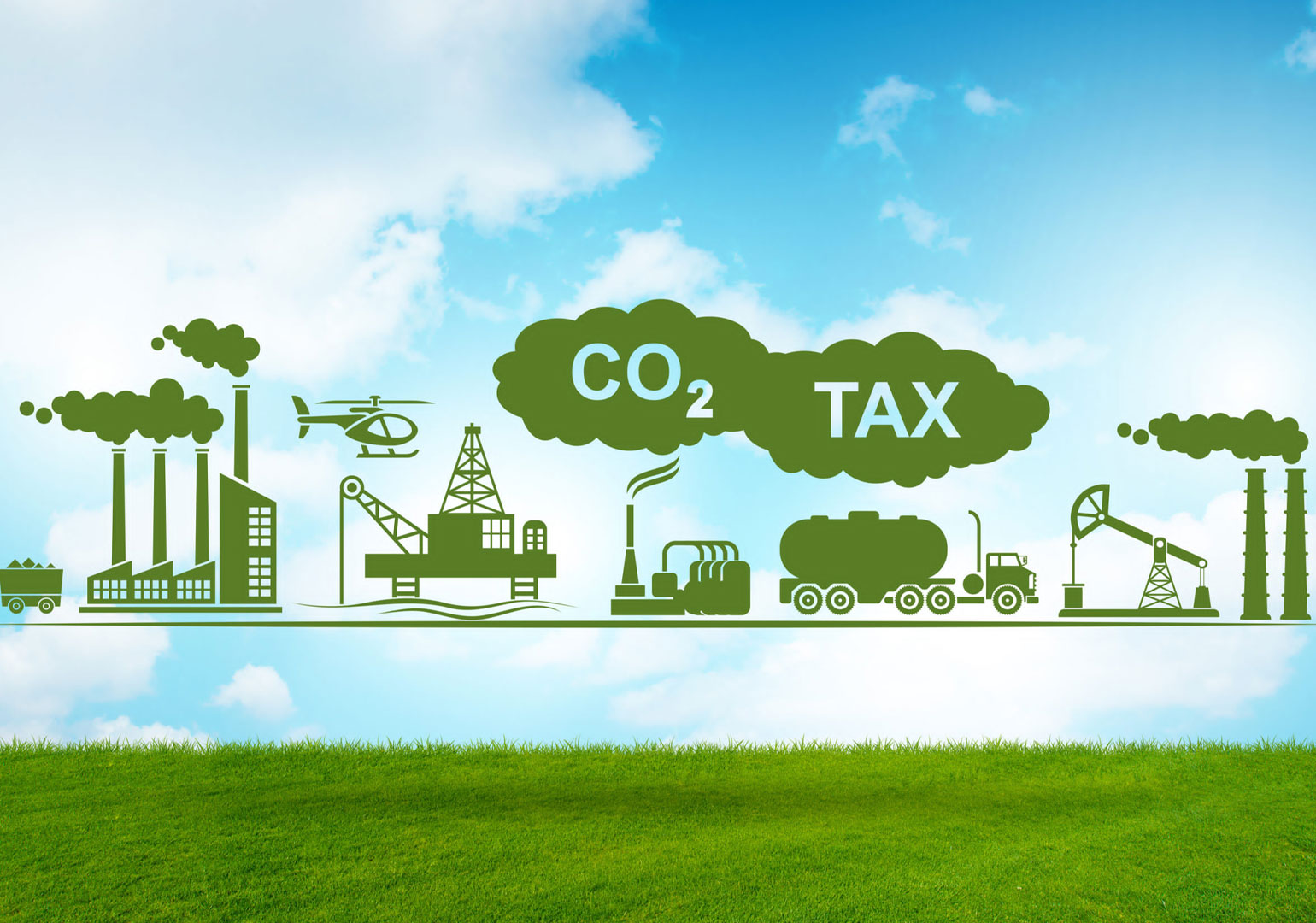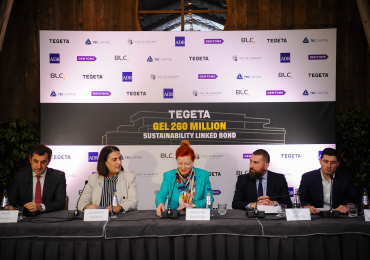Salome Janelidze, member of the board of Energy Training Center of GNERC talks about carbon border regulation mechanisms:
“Climate change occupies one of the leading places in the world agenda, and carbon taxes are actively used as a strategic mechanism to fight against it, meaning that producers are required to pay a certain fee for the GHG emitted into the atmosphere during the production of goods. According to a World Bank report, in 2022, the carbon tax covered 23% of global carbon emissions.
Two main carbon pricing mechanisms are used: carbon tax and Emissions Trading System (ETS). In the case of a carbon tax, the tax rate is determined based on the emitted GHG or the carbon content of the fossil fuel. As for the ETS, as a rule, it is created based on the “cap-and-trade” principle; The maximum allowable level of GHG emissions by the industrial sector is determined, and producers involved in the scheme are given or allowed to purchase emission allowances, i.e. certificates. The first international ETS was introduced in 2005 in the EU. Certificates can be purchased on the EU ETS market, where the price of certificates is determined by demand and supply, and the historical maximum price was recorded in February, 2023: 100.34 euros for one ton of carbon dioxide.
The imposition of carbon pricing in individual countries or regions may have some negative effects. The most common phenomenon is the so-called carbon leakage: manufacturers move their production processes to countries with little or no carbon liability and thus avoid paying carbon taxes while gaining a competitive advantage over local producers. In order to prevent carbon leakage and protect the interests of local producers, the EU offered subsidies and a certain number of free ETS certificates to local producers. In addition the EU took a major step against carbon leakage in April of this year by adopting the Carbon Border Adjustment Mechanism (CBAM) regulation.
The CBAM provides for putting the price on carbon embedded in certain carbon-intensive goods imported into the EU. Initially, the mechanism will cover six types of goods that pose the greatest risk of carbon leakage: cement, iron and steel, aluminum, fertilizers, electricity and hydrogen. The CBAM obliges EU importers of relevant goods to declare the amount of GHG embedded in goods imported over the course of the previous year and surrender corresponding CBAM certificates. CBAM certificates will be available for purchase on a single platform, and its price will be determined by the weekly average price of the EU ETS certificates. In addition, in parallel with the introduction of CBAM, starting from 2026, free certificates issued under the ETS scheme will be phased out.
The purpose of CBAM is to treat certain imported goods with the same regime as that applicable to domestically produced goods. The mechanism is based on the actual amounts of GHG emissions embedded in goods, which means that if the manufacturer is able to decarbonize the production processes, or if the country of production implements emissions trading systems with a price equivalent to the EU ETS, importers will no longer be subject to the obligation to acquire CBAM certificates. In addition, it is possible that the amount paid for the GHG emissions in the country of production is taken into account within the framework of CBAM.
CBAM will be implemented starting from October 1 of this year, however, a transitional phase will apply until 2026, during which importers of goods will only have the obligation of quarterly reporting, without the corresponding financial obligations. Both direct and indirect CO2 emissions embedded in imported goods should be reported. After the transitional phase, indirect emissions will be considered only for the cement and fertilizer sectors. In addition, in the case of non-fulfilment or improper fulfillment of the reporting obligation during the transition period, the importer may be fined between 10 and 50 euros for each ton of undeclared CO2 emissions.
CBAM complies with the “polluter pays” principle and is the first international mechanism of its kind. It is expected that the CBAM will encourage countries to set up national carbon pricing mechanisms, thereby ensuring that the cost of air pollution is kept at home rather than flowing to the EU. The EU estimates that, once fully implemented, CBAM will cover more than 50% of emissions from sectors covered by the ETS and reduce CO2 emissions by 14% by 2030.
The CBAM is undoubtedly an important step to protect the climate, but it will also have a significant impact on international trade. Some developing countries believe that with CBAM, the burden of climate change is shifting to them. According to a Bloomberg Intelligence analysis, the mechanism could increase the cost of electricity imports by up to 19%. According to a study by the Task Force on Climate, Development and the IMF, implementation of CBAM is expected to increase welfare by US$11 billion in certain developed countries and decrease welfare by US$9 billion in certain developing countries. According to a study prepared by the London School of Economics and the African Climate Foundation, with the implementation of CBAM, it is possible to reduce Africa’s GDP by US$25 billion annually. In addition, some countries, including China, India and South Africa, question CBAM’s compatibility with World Trade Organization rules that require equal treatment of imported and domestically produced goods.
As for the direct impact of CBAM on Georgia, in this regard, it is necessary to carry out appropriate studies. In 2022, goods worth 862.5 million US dollars were exported from Georgia to the European Union, which is 15.4% of the total export value. It is necessary to properly prepare those producers in Georgia who will be subject to CBAM requirements from October 1, 2023. This, among others, implies the implementation of methodologies for calculating the amount of CO2 embedded in the production of goods, which may be related to certain challenges”.
















